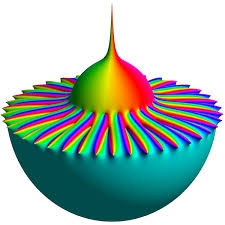ABS, ARG, CONJ, RECIPROCAL
Let z=-√2-√2i where i2 = -1. Find |z|, arg(z), z* (where * indicates the complex conjugate), and (1/z). Where appropriate, write your answers in the form a + i b,
where both a and b are real numbers.
Indicate the positions of z, z*, and (1/z) on an Argand diagram.
where both a and b are real numbers.
Indicate the positions of z, z*, and (1/z) on an Argand diagram.
Final Answer:

Tips for related online calculators
Try our complex numbers calculator.
See also our right triangle calculator.
See also our trigonometric triangle calculator.
Try conversion angle units angle degrees, minutes, seconds, radians, grads.
See also our right triangle calculator.
See also our trigonometric triangle calculator.
Try conversion angle units angle degrees, minutes, seconds, radians, grads.
You need to know the following knowledge to solve this word math problem:
arithmeticplanimetricsnumbersgoniometry and trigonometryUnits of physical quantitiesGrade of the word problem
Related math problems and questions:
- An Argand diagram
 Find the sum z1+z2 and difference z1-z2 and z2-z1 of z1=5+2i and z2=2+3i by an Argand diagram.
Find the sum z1+z2 and difference z1-z2 and z2-z1 of z1=5+2i and z2=2+3i by an Argand diagram. - Complex number z
 Let z = -5 + i and w = 4 - 2i. Compute z - w and write your final answer in a + bi form. x = z - w
Let z = -5 + i and w = 4 - 2i. Compute z - w and write your final answer in a + bi form. x = z - w - ReIm notation
 Let z = 6 + 5i and w = 3 - i. Compute the following and express your answer in a + bi form. w + 3z
Let z = 6 + 5i and w = 3 - i. Compute the following and express your answer in a + bi form. w + 3z - Real and imaginary parts
 Let z1=x1+y1i and z2=x2+y2i Find: a = Im (z1z2) b = Re (z1/z2)
Let z1=x1+y1i and z2=x2+y2i Find: a = Im (z1z2) b = Re (z1/z2) - Evaluate complex expr
 Evaluate the expression (-4-7i)-(-6-9i) and write the result in the form a+bi (Real + i* Imaginary).
Evaluate the expression (-4-7i)-(-6-9i) and write the result in the form a+bi (Real + i* Imaginary). - Cplx sixth power
 Let z = 2 - sqrt(3i). Find z6 and express your answer in rectangular form. if z = 2 - 2sqrt(3 i) then r = |z| = sqrt(2 ^ 2 + (- 2sqrt(3)) ^ 2) = sqrt(16) = 4 and theta = tan -2√3/2=-π/3
Let z = 2 - sqrt(3i). Find z6 and express your answer in rectangular form. if z = 2 - 2sqrt(3 i) then r = |z| = sqrt(2 ^ 2 + (- 2sqrt(3)) ^ 2) = sqrt(16) = 4 and theta = tan -2√3/2=-π/3 - Complex plane mapping
 Show that the mapping w = z +c/z, where z = x+iy, w = u+iv, and c is a real number, maps the circle |z| = 1 in the z-plane into an ellipse in the (u, v) plane.
Show that the mapping w = z +c/z, where z = x+iy, w = u+iv, and c is a real number, maps the circle |z| = 1 in the z-plane into an ellipse in the (u, v) plane.
